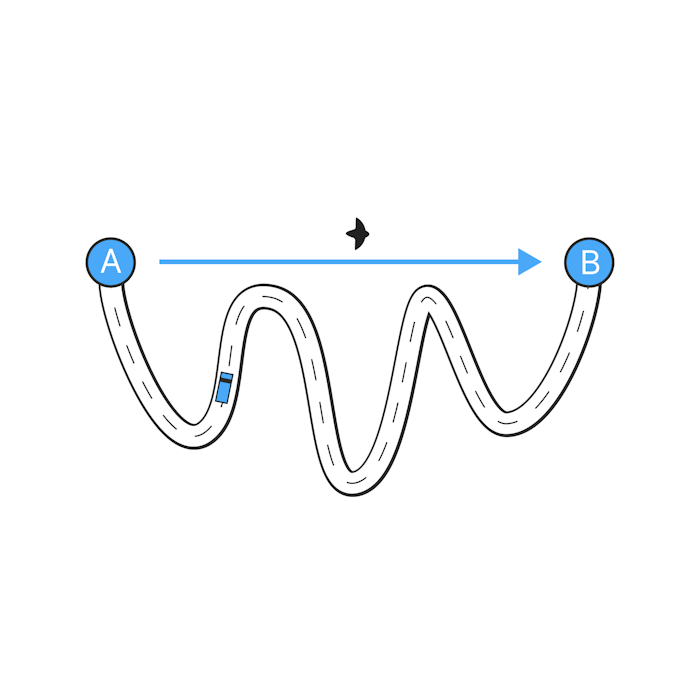Velocity
Direction AND speed to reach your goals

Going fast is less important than moving in the right direction. A velocity mindset lets you see how quickly you're heading towards your goals – and notice when you’re going off-track.
"If you don't know where you're going, you'll probably end up somewhere else", by David Campbell
If you want the best outcomes for your teams, you need to plan the exact direction they move in. An engineering leader who embraces a velocity mindset can track how fast the team is moving and if they’re moving towards their objective.
What is velocity
Velocity tracks the straight-line movement towards your goals. It is a metric commonly used in project management to predict the amount of work a team can complete in any given time. But more than that, it’s a mindset that allows you to see if you're heading quickly in the right direction. Speed is how fast you’re going. Velocity combines speed and direction at the same time to help us determine if we are moving quickly towards our goal, rather than just moving quickly.
Mental model of velocity
We can picture why direction is more important than speed alone by using the analogy of a car and a bird travelling between points two points - A and B - separated by a long winding road. . A bird travelling at 25mph is not as fast as a car travelling at 50 mph, but the bird has an advantage the car doesn't, it can fly in a straight line whereas the car must follow a long winding road to reach its destination. The bird is moving slower than the car but it has a higher velocity than it because it flies directly to its destination, covering far less distance than the car to reach point B.
How seeing velocity gets you to where you want to go more quickly
Understanding velocity allows you to know:
- When you’re wasting time off-course or have set off without a clear understanding of your goal (travelling along a winding road)
- Teams going slowly in the right direction can out-perform faster teams that are going off-track (bird vs car)
- Sometimes the goal might not be visible, so the quicker you can clarify that, the better (point B might be over a hill that you cannot see from the starting point)
- It more successful to start off with a smaller team moving towards a more direct and closer goal, adding more people later once the longer-term goals are set (start as an agile bird, change to a fast car when you hit a straight road)